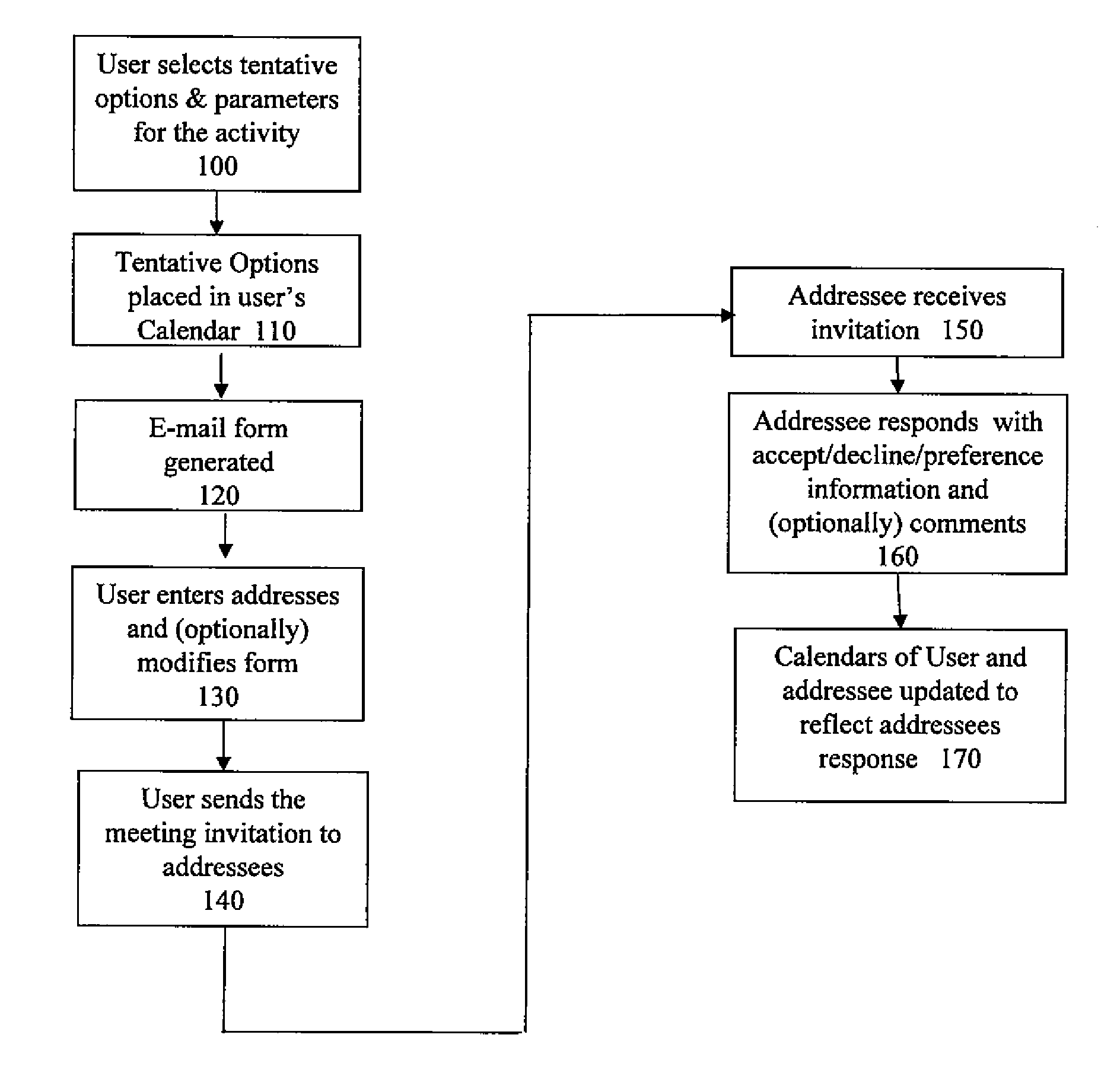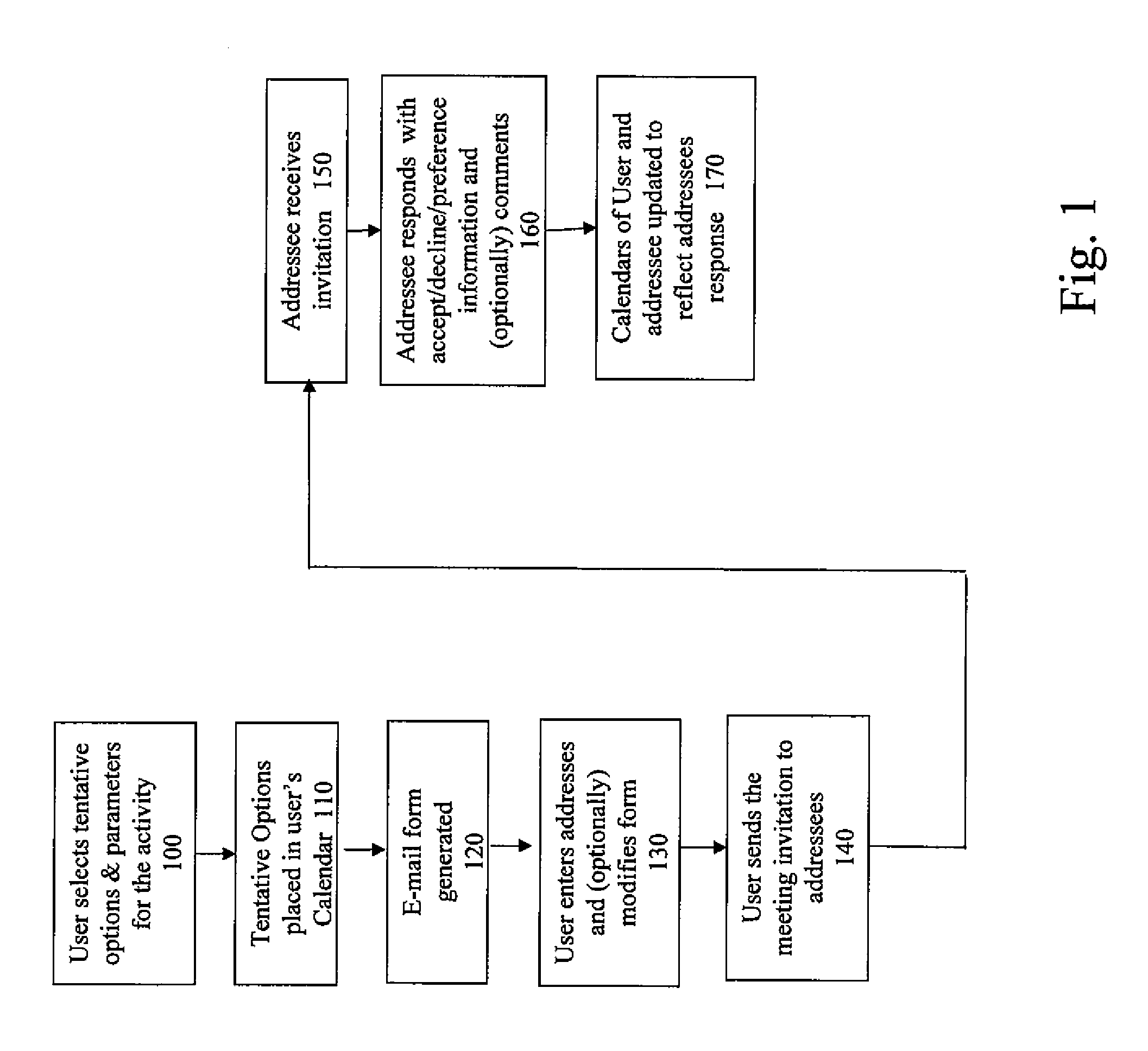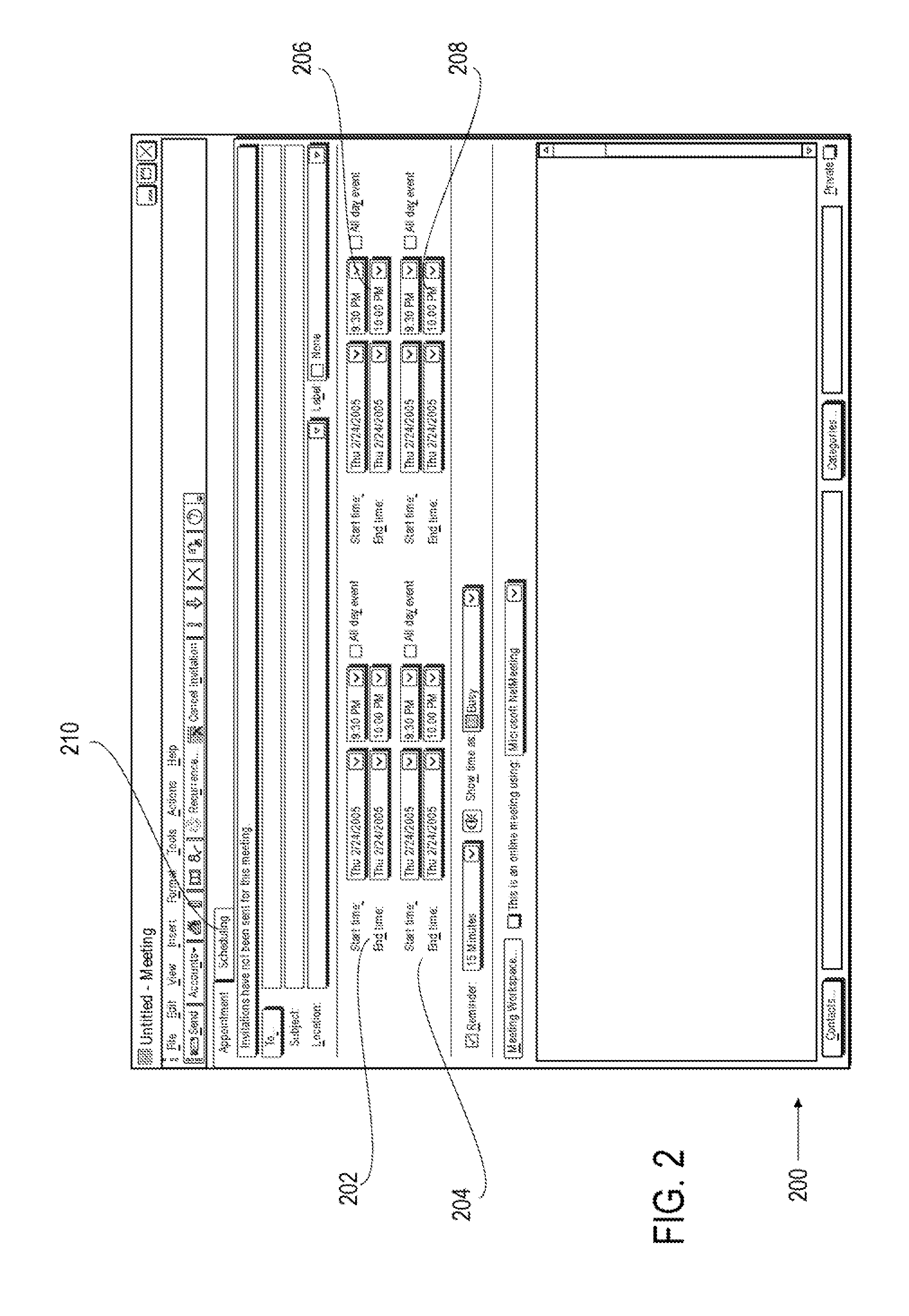Method and user interface for computer-assisted schedule coordination
a scheduling and computer-assisted technology, applied in computing, instruments, electric digital data processing, etc., can solve the problems of not solving the situation, the desktop software tool cannot be used (at least not efficiently), and the recurrent process of organizing and scheduling meetings is not streamlined by the tools, so as to facilitate the user selection activity
- Summary
- Abstract
- Description
- Claims
- Application Information
AI Technical Summary
Benefits of technology
Problems solved by technology
Method used
Image
Examples
Embodiment Construction
[0022] Described herein are computer-assisted methods and systems for scheduling and managing multi-user events or activities and, in particular, a graphical user interface useful for such scheduling and management. In reviewing this description it should be understood that the present invention is not limited in its application to the details of construction or programming and the arrangement of the components described below or illustrated in the drawings. Indeed, the present invention is capable of being implemented in other embodiments and / or of being practiced or carried out in various ways. Stated differently, the present invention is not intended to be limited by the description of any specific examples or use of any particular illustrations, which examples and illustrations are intended only to enhance understanding of the invention. Also, it is to be understood that the phraseology and terminology employed herein is for the purpose of description and should not be regarded ...
PUM
 Login to View More
Login to View More Abstract
Description
Claims
Application Information
 Login to View More
Login to View More - R&D
- Intellectual Property
- Life Sciences
- Materials
- Tech Scout
- Unparalleled Data Quality
- Higher Quality Content
- 60% Fewer Hallucinations
Browse by: Latest US Patents, China's latest patents, Technical Efficacy Thesaurus, Application Domain, Technology Topic, Popular Technical Reports.
© 2025 PatSnap. All rights reserved.Legal|Privacy policy|Modern Slavery Act Transparency Statement|Sitemap|About US| Contact US: help@patsnap.com



